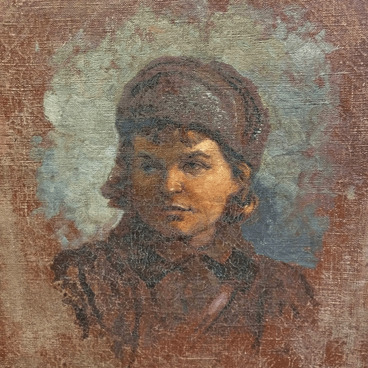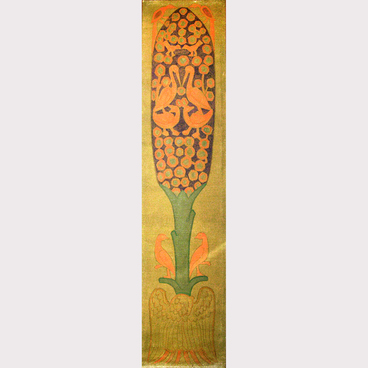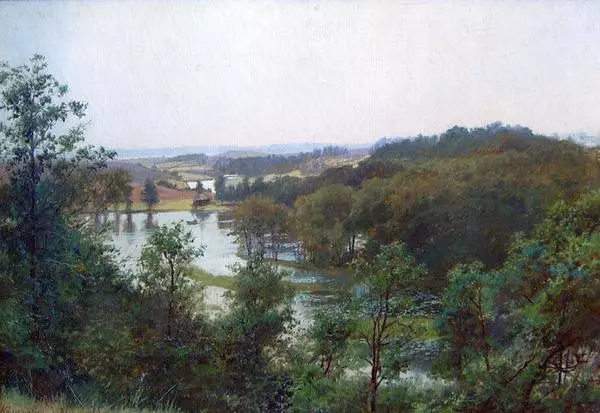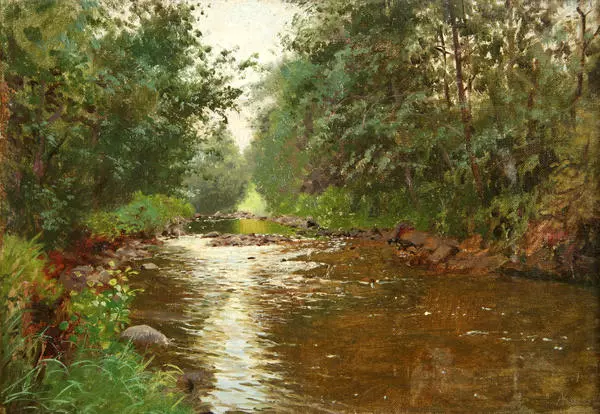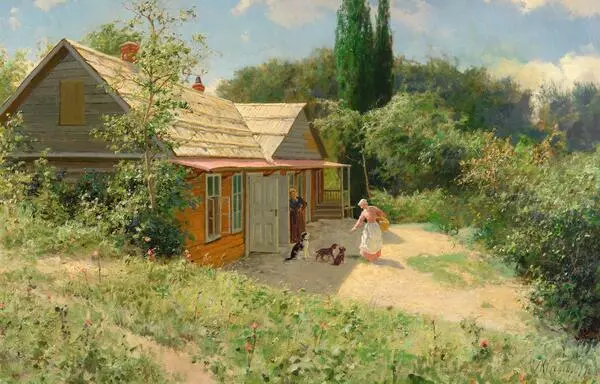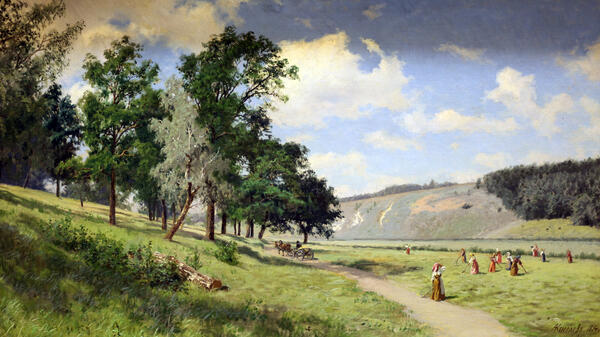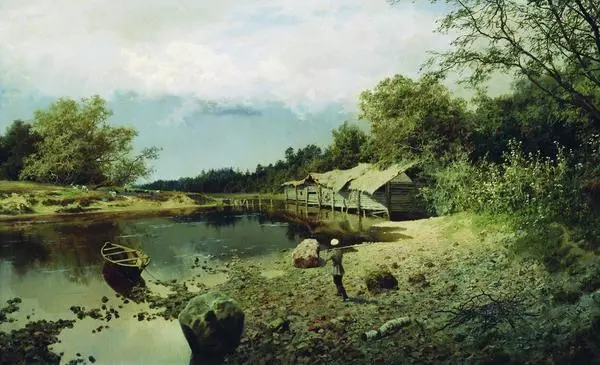Alexander Alexandrovich Kiselyov, a Russian landscape painter, was born on June 18, 1838 in Sveaborg, on the territory of modern Helsinki. In 1858, he was admitted to St. Petersburg University. In 1861, after the closure of the educational institution due to student unrest, he began studying at the St. Petersburg Imperial Academy of Arts.
In 1864, Alexander Kiselyov graduated from the Academy, received a certificate of a class artist of the III degree and a Grand Silver Medal. The following year, the artist went to Kharkov, where he rented a room in one of the houses on the outskirts of the city. In the morning, the artist painted studies, worked on icons in the afternoon, gave drawing lessons, and wrote articles in magazines. There he met the daughter of Kharkov professor Protopopov, whom he later married.
In Kharkiv, Alexander Alexandrovich got a job as a secretary in a Land Bank. He left professional painting classes for almost ten years. From 1876, Kiselyov began to actively participate in traveling art exhibitions. His 1875 painting “View in the Vicinity of Kharkiv” was particularly popular.
In 1877, the artist moved to Moscow, where he began to earn mainly by teaching. In 1890, Alexander Kiselyov was awarded the title of academician, and three years later he became a full member of the Academy of Arts. In 1897, after Professor Arkhip Ivanovich Kuindzhi left the Academy, Kiselyov was elected and confirmed as professor — head of the landscape workshop. He held this position until the last days of his life.
In 1902, Kiselyov built
a house in Tuapse, where he often vacationed with his family. He created the
painting “Sea” from the collection of the Gorlovka Art Museum in 1906. In this
work, the artist proved himself to be a master of plein-air painting. Alexander
Alexandrovich managed to achieve a bright color effect in the image of the bay,
the sky and the distant chain of mountains. The artist has thoroughly worked
out the perspective: the surface of the sea melts into haze, the horizon and
the outlines of the mountains go far back into the distance. The painting is
full of light and air. Animating the landscape, the artist depicted a desert on
the right and a boat in the center.

